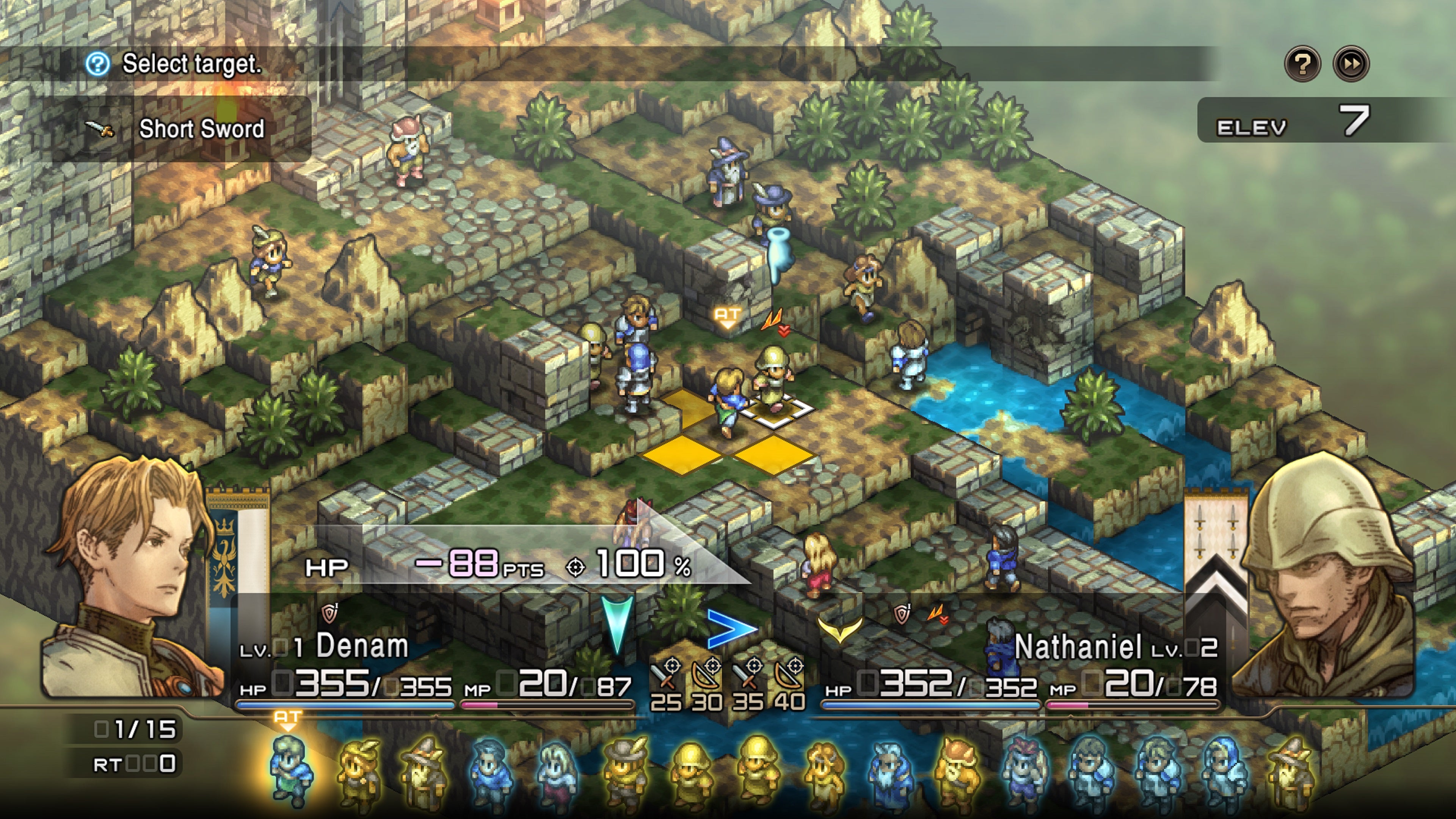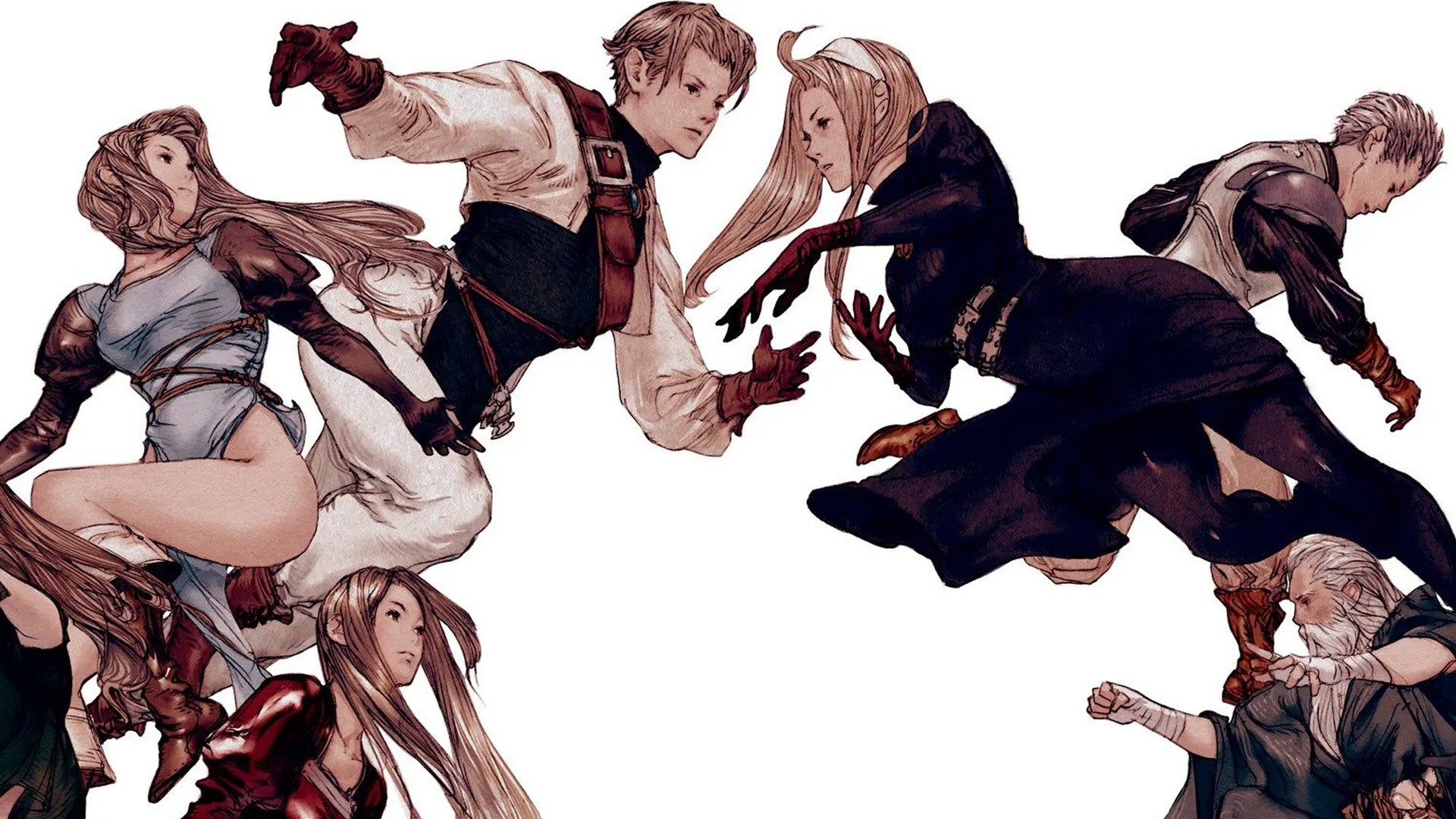Square Enix has, essentially, removed barriers to play in getting Tactics Ogre: Reborn out into modern players’ hands. By letting your units take a little tour of the battlefield and collect cards that buff their stats and open their options up, you’re no longer confined into one specific style of play with your armies. Letting your defensive classes, say, beef up their sword arms and get stronger hits in? That’s viable now. It means that your myriad battles – all lasting somewhere between 20 to 50 minutes – can unfold more fluidly. By dominating the battlefield and understanding your surroundings (and responding to the Buff Cards that like to spawn into the field), you can more readily and spontaneously respond to enemy threats. Sending a dragoon down the flank to catch a Critical Hit+ card and then seeing them skewer the open side of an army, before butchering the back line? That’s tactical-RPG catnip. It makes you feel like Sun Tzu. And it’s something that didn’t really exist with the Tarot system in the orignal. As late-coming, added-in features go, it’s a stroke of genius. This more tidal nature in a Tactics Ogre game does wonders for the brain, too. Whilst your left-brain is firing off, calculating all the min/max maths you do to ensure your wizard will live to see another battle, your right brain is awash with fiction. Why does moving to this swamp tile give your ninja an attack buff? Maybe it’s because from here she can launch an assault on the phalanx of the enemy back line, right? There’s a rock she hides behind before sneaking down and picking off the stragglers. In a game as slow as Tactics Ogre: Reborn (not a criticism), it’s nice to give your brain space to think about the fiction of the melee. Especially when the title itself does such a good job of fleshing out this world – the throny politics of it barbing and snagging at your cortex, drawing you into its intrigue and menace. Game of Thrones, eat your heart out. To draw you in further, and give your senses even more delicious stimuli to feed on, you’ve got the brand-new soundtrack; an emotive barrage of bombast and triumph that – genuinely – will have you gripping your Switch in delight as it rouses and swells to match the way you put a rebel insurrection to bed in that one lake-tiled map. I’ve been playing on an OLED Switch, and the character art and sharp pixel presentation of the in-game graphics manage to tread the fine line of being nostalgic and familiar, yet clean and fitting for modern hardware. It looks even better than it did in handheld on the PSP back in 2010 – and that really is saying something, because the Sony version of this remaster was also lush. If you’re coming to this from newer, fancier strategy-RPG titles (hello, Fire Emblem: Three Houses fans), you’ll be put off by some of the more granular UI stuff. There are only two camera options in-battle – overhead or isometric – and navigating around the map when things start to get more knotty can be a frustrating drag. The game is also a relic from an era of grind; kill off one of your hero knights when they’re at level 42, say, and you’ll be forced to recruit their replacement at level 1 (or try and persuade a rival mercenary to join your ranks). I like this; it makes you value every life, and not simply fall into the pit of thinking your crew is expendable. It makes the battles have weight, consequence, danger. And if you mess it up, you can always boot up and old save. You’ll only lose… wait – what, 90 minutes?! Damn. If you love the setup and execution of this remaster as much as me, then you’ll also revel in the oppertunity to turn back time and see where the branching narratives converge and diverge. On completion, you can rewind time to any major event and choose a different path; see how things would have gone if you saved that character, or executed that other one. More granular, you can do it move-per-move in battle, too – rewinding two turns to make sure your cleric doesn’t get sniped with a blowpipe from all the way across the map (again). In a world where we’ve seen Square Enix fall down with remasters (examples include the lacklustre Final Fantasy Pixel Remasters and the egregious Kingdom Hearts on Switch), Tactics Ogre: Reborn highlights something special – a change of the guard, so to speak, that bodes remarkably well for the rest of the publisher’s classic RPG oeuvre.

